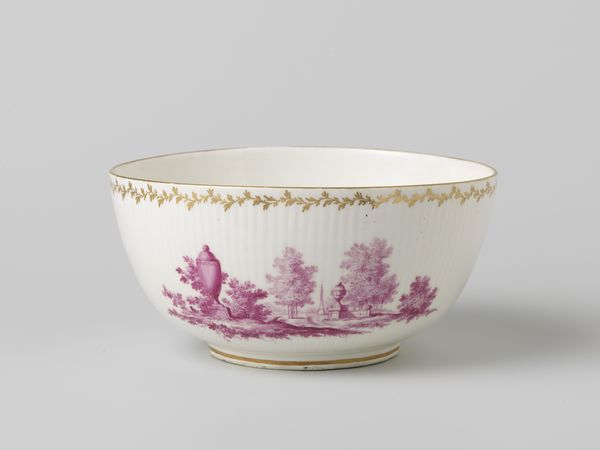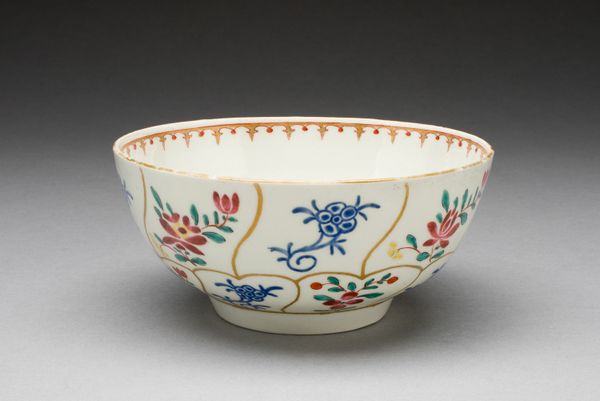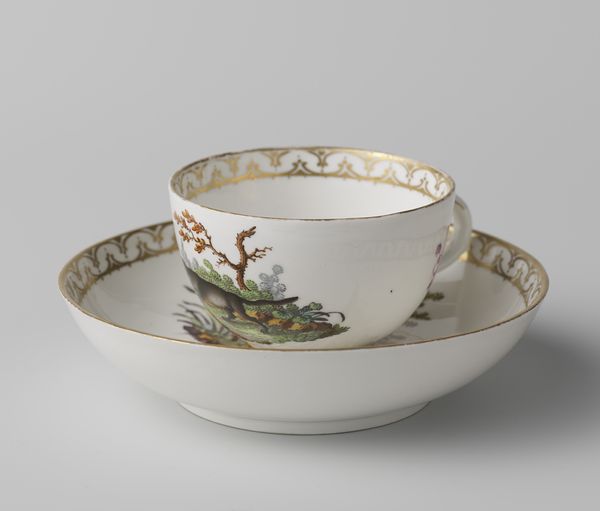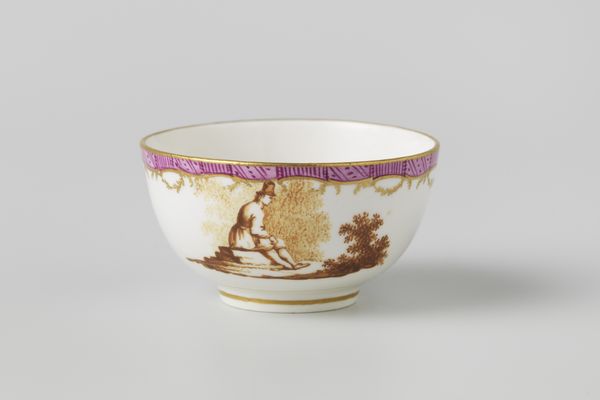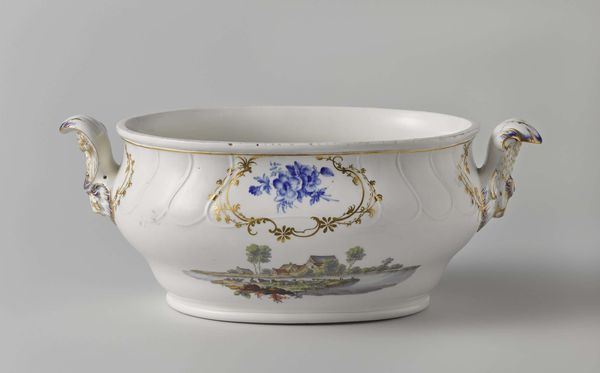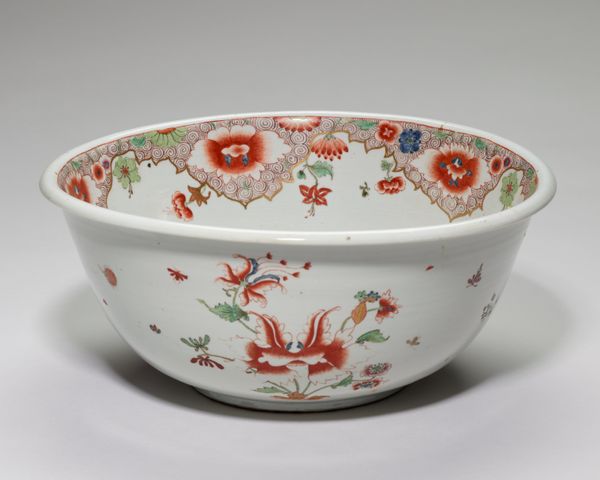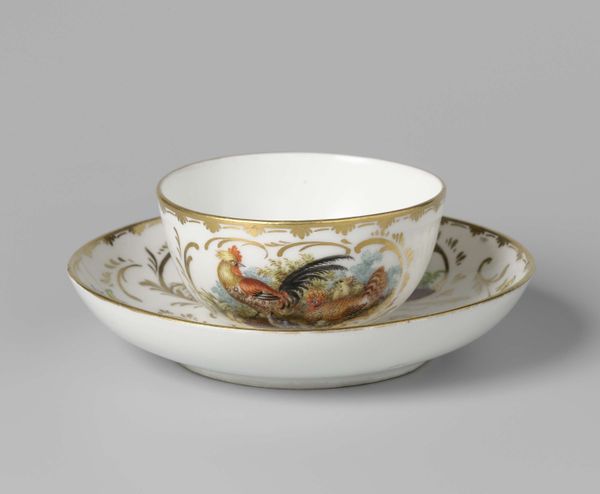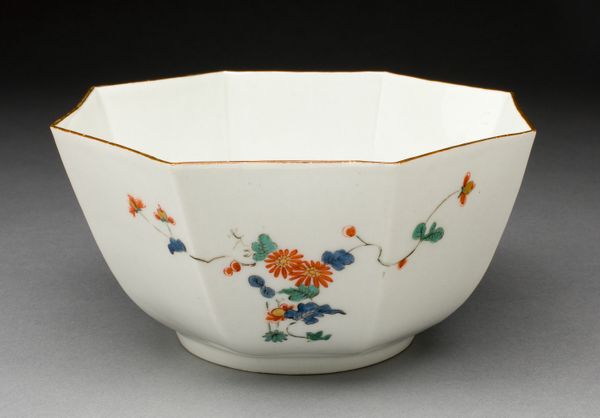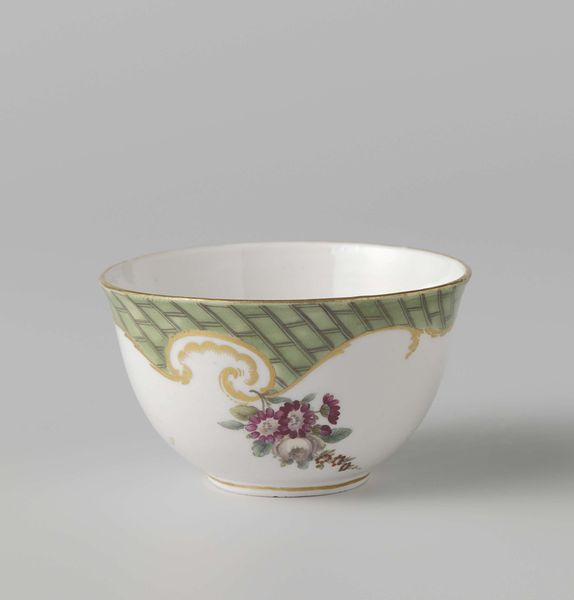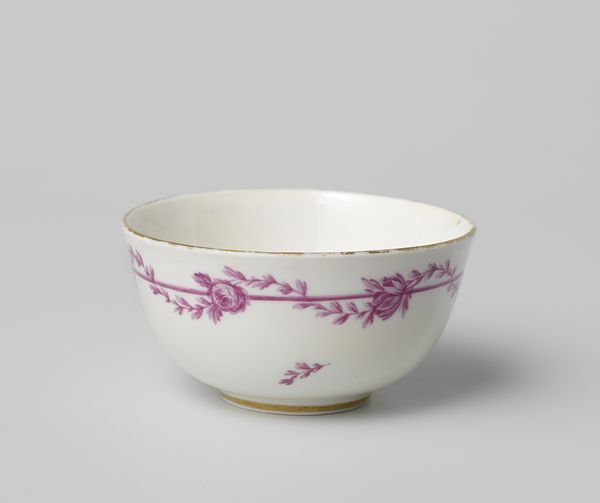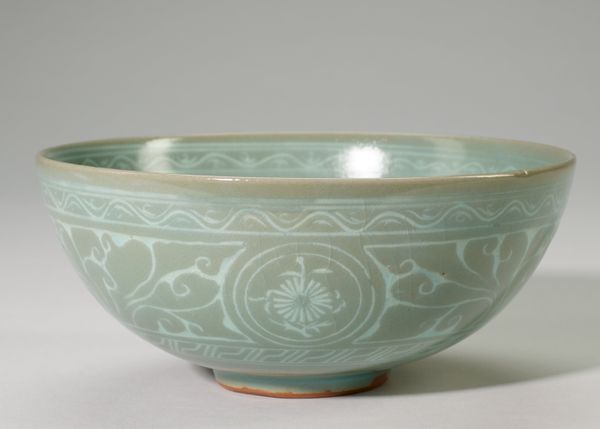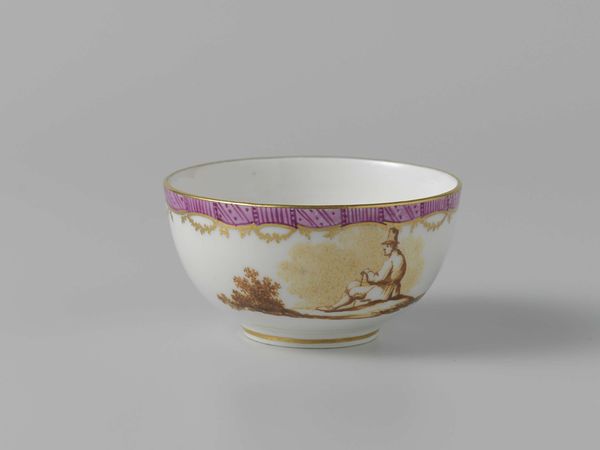
Creamer from a Tea Service 1807 - 1813
0:00
0:00
ceramic, porcelain
#
pottery
#
neoclassicism
#
ceramic
#
porcelain
#
england
#
decorative-art
Dimensions: 3 x 6 5/8 x 6 5/8 in. (7.62 x 16.83 x 16.83 cm)
Copyright: Public Domain
Curator: Looking at this object, I’m struck by a sense of quiet opulence. The gold trim against that warm, almost terracotta color band gives it a luxurious feel. Editor: Indeed. We're examining a creamer, part of a tea service crafted by the Worcester Porcelain Works in England, sometime between 1807 and 1813. Creamer: seems such an unassuming title for such a precious object. I'd like to dive into the source of its materials. I wonder who mined the raw components, and where they sailed from. Curator: Absolutely. Considering the period, the Neoclassical style really comes through, especially in the stylized strawberry and leaf motif circling the piece. Strawberries have been linked with Venus since the medieval period as an emblem of perfection. Here they have an elegant touch, don’t they? The arrangement echoes themes of fertility, prosperity. It’s not just a pretty pattern. Editor: It’s pretty, without question. However, thinking of Neoclassicism as an embrace of clean, austere lines, these ornate details signal that this is Neoclassicism for a particular elite. And the firing of porcelain, with the kind of heat required – we’re talking specialized fuel, potentially entire forests depleted! Curator: You're right, the materials themselves carry weight, and reflect power. This isn’t just a vessel for cream; it’s a status symbol, reflecting access and the symbolic language of the time. Its survival is a reminder of England’s refined tastes and global aspirations. Editor: Refined tastes indeed, born out of material consumption. A piece like this forces us to ask, at what cost that delicate beauty? And considering it's on display here at the Minneapolis Institute of Art, we should keep in mind what choices led to its preservation and placement for our consideration now. Curator: I appreciate your emphasis on materiality, a welcome reminder of the complex forces at play. Seeing this today, removed from the tea table it would have graced, the piece takes on new meanings for us, especially thinking about what that table means socially and materially. Editor: For me, this creamer transcends its utilitarian purpose; it acts as a powerful token about craftsmanship, access, and what objects do in representing our entangled histories.
Comments
No comments
Be the first to comment and join the conversation on the ultimate creative platform.
